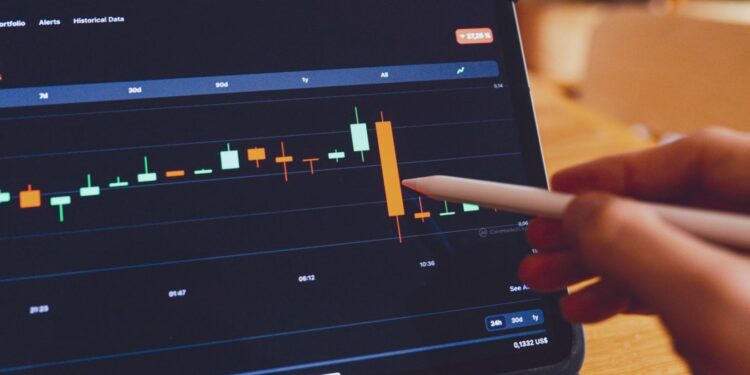High-frequency trading improves markets with tighter spreads and more liquidity while allowing traders to make hefty profits. But this trading style isn’t available to everyone. Running HFT requires tech investments, infrastructure, and teams of experts – putting it out of reach for many companies.
Major Benefits of HFT in Trading Efficiency
Speed is a defining advantage in HFT. With execution times faster than human reaction, firms can capitalize on short-lived market opportunities with unmatched precision. In this competitive space, reducing latency is a fundamental priority.
One of the key advantages of HFT is securing a better queue position and the ability to adjust existing quotes faster. Most exchanges operate on a time-priority basis, meaning that the first order in the queue gets executed first when a matching trade becomes available. HFT firms leverage their speed to consistently place orders ahead of slower participants, improving their chances of execution. Additionally, price shifts can turn standing quotes into potential liabilities. High-frequency traders can rapidly update their orders in response to news, large trades, or price movements in correlated assets, reducing the risk of unfavorable executions and preserving profitability.
Another major strength is the ability to leverage advanced trading strategies that would be impossible without high-speed execution. Market-making, statistical arbitrage and latency arbitrage allow firms to generate consistent returns by exploiting short-term price inefficiencies. The firms with the fastest infrastructure gain a significant competitive edge, enabling them to generate steady profits in all market conditions.
For companies that invest in HFT, the combination of speed and sophisticated strategies translates into a sustained advantage over slower market participants. Firms that successfully implement HFT can maximize profitability and dominate in fast-moving trading environments.
Key Barriers to High-Frequency Trading Adoption
Despite its advantages, entering the HFT space presents challenges related to technology, finance, regulation, and expertise.
The technological demands are particularly steep. Firms must develop low-latency infrastructure capable of executing trades at ultra-fast speeds. Field Programmable Gate Arrays (FPGAs) and, in some cases, Application-Specific Integrated Circuits (ASICs) are essential for executing trades with minimal delay. The industry operates in a never-ending “speed race,” pushing firms to continuously upgrade their systems. Specialized companies like Magmio provide FPGA-driven trading solutions, demonstrating the sector’s ongoing shift toward the newest technology. As exchange infrastructure improves—reducing random processing delays, known as “jitter”—even the slightest gains in speed become increasingly critical.
Regulatory complexity adds another layer of difficulty. In the U.S., HFT firms usually register as broker-dealers with the SEC and FINRA, adhering to various compliance requirements. Recent SEC rule changes have tightened oversight, mandating registration for firms that provide liquidity or earn revenue from bid-ask spreads. In Europe, Markets in Financial Instruments Directive II (MiFID II) imposes strict guidelines on risk controls, system resilience, and transparency, further increasing regulatory burdens.
How Infrastructure Costs Limit HFT Market Access
Setting up a high-frequency trading system demands upfront investment in high-performance servers, hardware, and fast networking equipment. These systems must be capable of processing massive datasets with minimal latency, requiring continuous upgrades to maintain competitiveness.
Co-location services represent another major expense. To gain proximity to exchange data centers, firms lease rack space at a significant cost. Additional expenses for cross-connects and real-time market data access can exceed a few thousand dollars per exchange each month. High-speed data lines linking major financial hubs add further financial strain.
Trading fees, while seemingly minor per transaction, accumulate given HFT’s high volume of trades.

Compliance costs also add up, requiring legal expertise, specialized monitoring systems, and ongoing regulatory adjustments—all of which make HFT a domain dominated by well-funded firms.
Why FPGA Solutions Enhance HFT Performance
Field-Programmable Gate Arrays (FPGAs) have become a game-changer in HFT, providing critical speed advantages over traditional computing architectures. Unlike general-purpose processors, FPGAs operate with ultra-low latency through hardware-level parallelism, reducing order execution time to nanoseconds.
By bypassing traditional operating system software stacks, FPGAs optimize performance at the hardware level. Strategies can be executed directly within the hardware, removing potential software bottlenecks that could slow down execution.
Compared to ASICs, which offer similar speed benefits, FPGAs provide one crucial advantage: adaptability. Unlike ASICs, which are fixed in function once manufactured, FPGAs can be reprogrammed to accommodate evolving market conditions and new strategies. Given that many profitable HFT strategies have short lifespans before market forces erode their edge, this adaptability is a crucial factor for firms seeking sustainable success.
The combination of speed, efficiency, fast implementation, and flexibility has made FPGA technology a fundamental asset for many firms that are competing in high-frequency trading.










